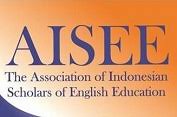THE EFFECT OF VIRTUAL LITERATURE CIRCLE ON UNIVERSITY STUDENTS’ READING COMPREHENSION: A GENDER-BASED ANALYSIS
DOI:
https://doi.org/10.36706/jele.v12i1.67Keywords:
gender-based analysis, higher education, reading comprehension, virtual literature circlesAbstract
This study investigates the effect of Virtual Literature Circles (VLCs) on the reading comprehension of university students, with a focus on gender-based differences. A mixed-methods approach was employed, involving a quasi-experimental design with pre-and post-tests, questionnaires, and interviews. The participants were divided into an experimental group (n = 30) and a control group (n = 30). The mean post-test score of the experimental group increased significantly from 65.23 (SD = 6.89) to 82.47 (SD = 5.32), while the control group showed a smaller improvement from 64.87 (SD = 7.14) to 70.23 (SD = 6.75). Independent sample t-tests confirmed a statistically significant difference in post-test scores between the two groups (p < 0.01). Gender-based analysis revealed that female students in the experimental group outperformed male students, with mean post-test scores of 84.15 (SD = 4.87) and 80.32 (SD = 5.64), respectively. Questionnaire and interview data indicated that female students reported higher levels of engagement, confidence, and perceived benefit from the VLCs. The findings suggest that VLCs are an effective and gender-responsive strategy for improving reading comprehension in higher education, particularly in virtual learning contexts.
References
Alexander, R. (2008). Towards dialogic teaching: Rethinking classroom talk (4th ed.). Dialogos.
Almasi, J. F., & Garas-York, K. (2009). Comprehension and discussion of text: A meta-analysis of literature discussion groups. Journal of Literacy Research, 41(3), 325–351. https://doi.org/10.1080/10862960903129113
Anderson, N. J. (2008). Metacognition and good language learners. In C. Griffiths (Ed.), Lessons from good language learners (pp. 99–109). Cambridge University Press. https://doi.org/10.1017/CBO9780511497667.009
Daniels, H. (2002). Literature circles: Voice and choice in book clubs and reading groups (2nd ed.). Stenhouse Publishers.
Gilligan, C. (1982). In a different voice: Psychological theory and women’s development. Harvard University Press.
Grabe, W., & Stoller, F. L. (2013). Teaching and researching reading (2nd ed.). Routledge. https://doi.org/10.4324/9781315833743
Harris, A., & Barnes, M. (2009). Gender and student engagement in secondary school reading. The Australian Educational Researcher, 36(3), 89–112. https://doi.org/10.1007/BF03257080
Huang, H. C. (2014). Online literature circles: Adapting literature circles for the digital age. The Reading Teacher, 67(7), 569–573. https://doi.org/10.1002/trtr.1240
Jetton, T. L., & Dole, J. A. (2004). Adolescent literacy research and practice. Guilford Press.
King, A. (2001). Structuring peer interaction to promote high-level cognitive processing. Theory Into Practice, 41(1), 33–39. https://doi.org/10.1207/s15430421tip4101_6
Larson, L. C. (2010). Digital readers: The next chapter in e-book reading and response. The Reading Teacher, 64(1), 15–22. https://doi.org/10.1598/RT.64.1.2
Logan, S., & Johnston, R. (2009). Gender differences in reading ability and attitudes: Examining where these differences lie. Journal of Research in Reading, 32(2), 199–214. https://doi.org/10.1111/j.1467-9817.2008.01389.x
McCarthy, P., Li, L., & Christ, T. (2011). Gender differences in reading engagement: The case of online literature circles. Journal of Adolescent & Adult Literacy, 55(3), 243–251. https://doi.org/10.1002/JAAL.00030
Meece, J. L., Glienke, B. B., & Burg, S. (2006). Gender and motivation. Journal of School Psychology, 44(5), 351–373. https://doi.org/10.1016/j.jsp.2006.04.004
Nation, I. S. P. (2009). Teaching ESL/EFL reading and writing. Routledge. https://doi.org/10.4324/9780203876693
Partnership for 21st Century Skills. (2009). P21 framework definitions. http://www.battelleforkids.org/networks/p21
Sadker, D., & Zittleman, K. (2009). Still failing at fairness: How gender bias cheats girls and boys in school and what we can do about it. Scribner.
Thomas, D. (2020). Exploring the use of virtual literature circles in tertiary education: A case study. International Journal of Educational Technology in Higher Education, 17(1), 1–17. https://doi.org/10.1186/s41239-020-00196-z
Trilling, B., & Fadel, C. (2009). 21st century skills: Learning for life in our times. Jossey-Bass.
UNESCO. (2015). A guide for gender equality in teacher education policy and practices. UNESCO Publishing.
Unterhalter, E. (2017). A review of public-private partnerships around girls’ education in developing countries: Flickering signifiers in development contexts. Philosophy and Theory in Higher Education, 1(1), 55–73. https://doi.org/10.3726/PTIHE.1.1.05
Vygotsky, L. S. (1978). Mind in society: The development of higher psychological processes. Harvard University Press.
Downloads
Published
Issue
Section
License
Copyright (c) 2025 The Journal of English Literacy Education: The Teaching and Learning of English as A Foreign Language

This work is licensed under a Creative Commons Attribution-ShareAlike 4.0 International License.













